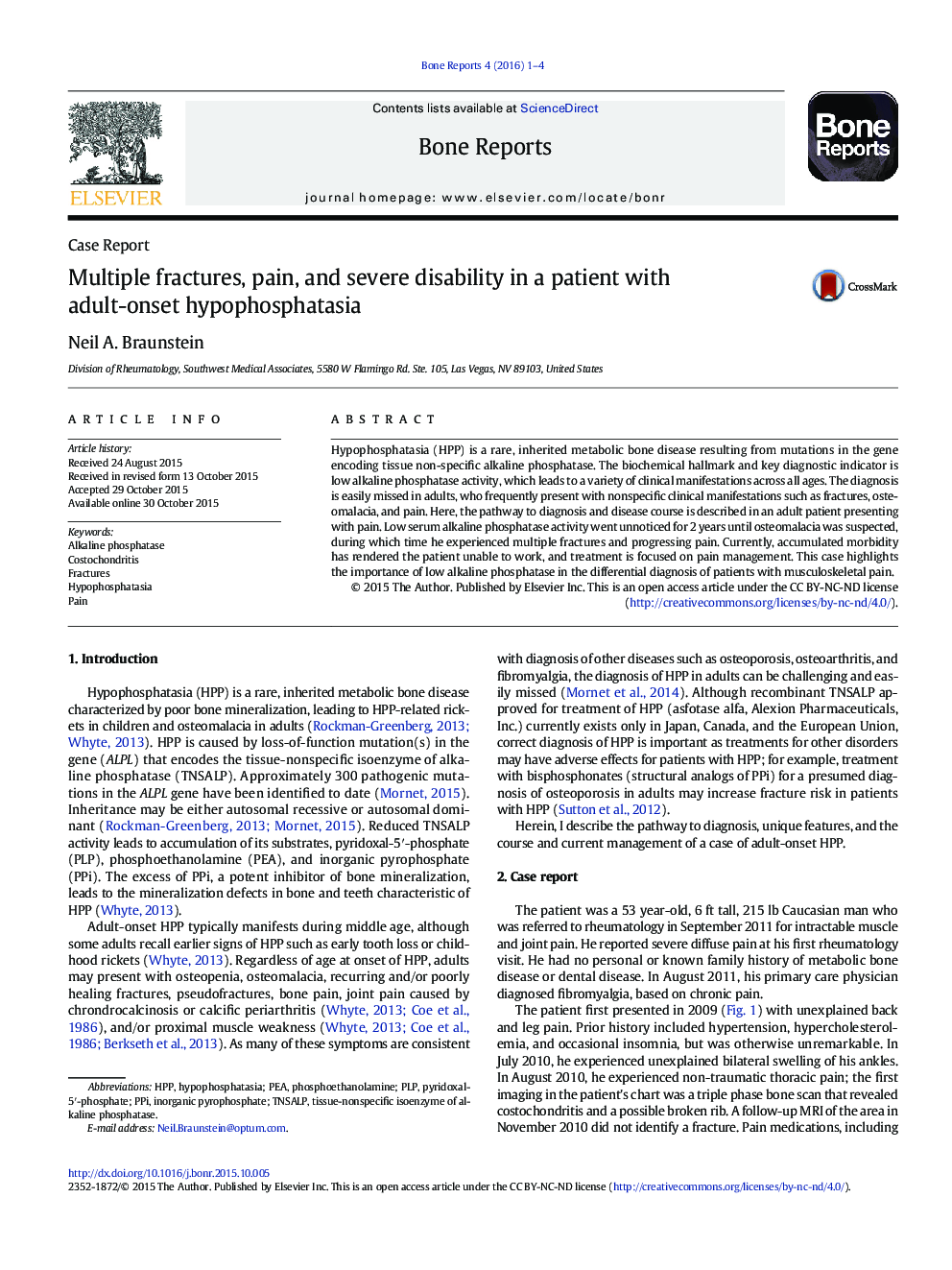| Article ID | Journal | Published Year | Pages | File Type |
|---|---|---|---|---|
| 2792331 | Bone Reports | 2016 | 4 Pages |
•Diagnosis of hypophosphatasia may be missed in adults with nonspecific features such as fractures, osteomalacia and pain•The biochemical hallmark and key diagnostic indicator is low alkaline phosphatase activity•A case is described of an adult whose diagnosis was initially missed, despite low alkaline phosphatase levels for 2 years•Low alkaline phosphatase levels are important in the differential diagnosis of patients with musculoskeletal pain
Hypophosphatasia (HPP) is a rare, inherited metabolic bone disease resulting from mutations in the gene encoding tissue non-specific alkaline phosphatase. The biochemical hallmark and key diagnostic indicator is low alkaline phosphatase activity, which leads to a variety of clinical manifestations across all ages. The diagnosis is easily missed in adults, who frequently present with nonspecific clinical manifestations such as fractures, osteomalacia, and pain. Here, the pathway to diagnosis and disease course is described in an adult patient presenting with pain. Low serum alkaline phosphatase activity went unnoticed for 2 years until osteomalacia was suspected, during which time he experienced multiple fractures and progressing pain. Currently, accumulated morbidity has rendered the patient unable to work, and treatment is focused on pain management. This case highlights the importance of low alkaline phosphatase in the differential diagnosis of patients with musculoskeletal pain.
